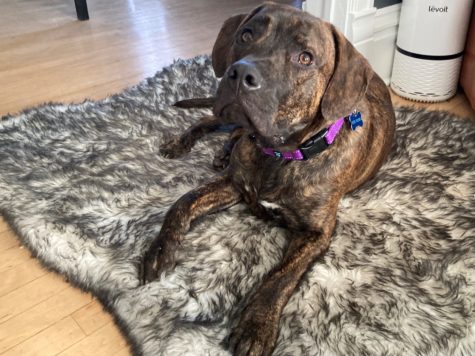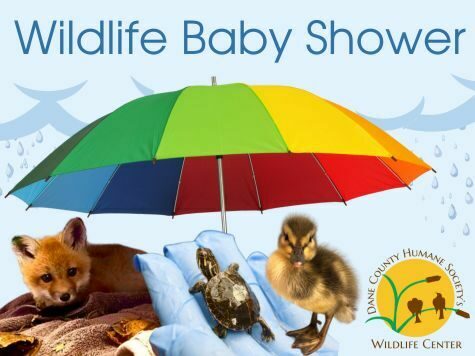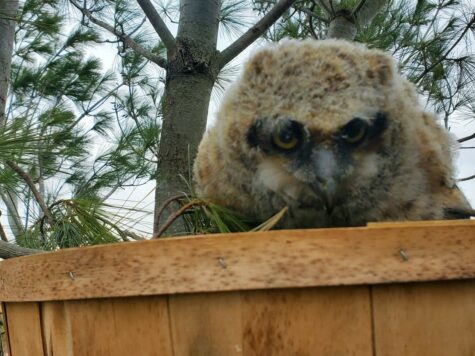Growing up, my family had German Shepherds. In college, no house ever felt like home -- and I think it was because I had roommates instead of dogs to play with and siblings to drive me crazy. When I finally moved back to my hometown at 24 years old, my top two priorities were 1 – get my own apartment, 2 – rescue a dog. The only roommate I wanted after years of college craziness in shared spaces was one with paws and fur. I ended up at the local humane society and brought home my first official dog. Her name was Sweetie, she was a 3.5-year-old, dog-reactive, 100-pound Akita. Sweetie LOVED kids – they’re the perfect height for face licking! A stubborn softie and a constant training challenge -- she was a learning experience. Adopting her was the best decision I ever made!
After five years, I was searching for a hobby that offered the opportunity to meet new people, so I looked into volunteering for an organization I could be passionate about. At that time, Sweetie was around nine years old and had started a slow descent into age-related health issues. I started to get worried. What was I going to do when she wasn’t there? I knew I wanted to rescue my next dog too, but felt I needed to understand more about rescues. And what better way to learn about rescue animals than to volunteer at an animal shelter?
Volunteering for Dane County Humane Society (DCHS) as a Canine Companion felt like the perfect fit from the first day. I became one of “those” people who talked about their hobby all the time; sometimes to family who had heard my shelter stories a hundred times while they nodded and rolled their eyes, and other times to people who shared the same interest and enthusiasm, who took the time for in-depth conversations and teaching.
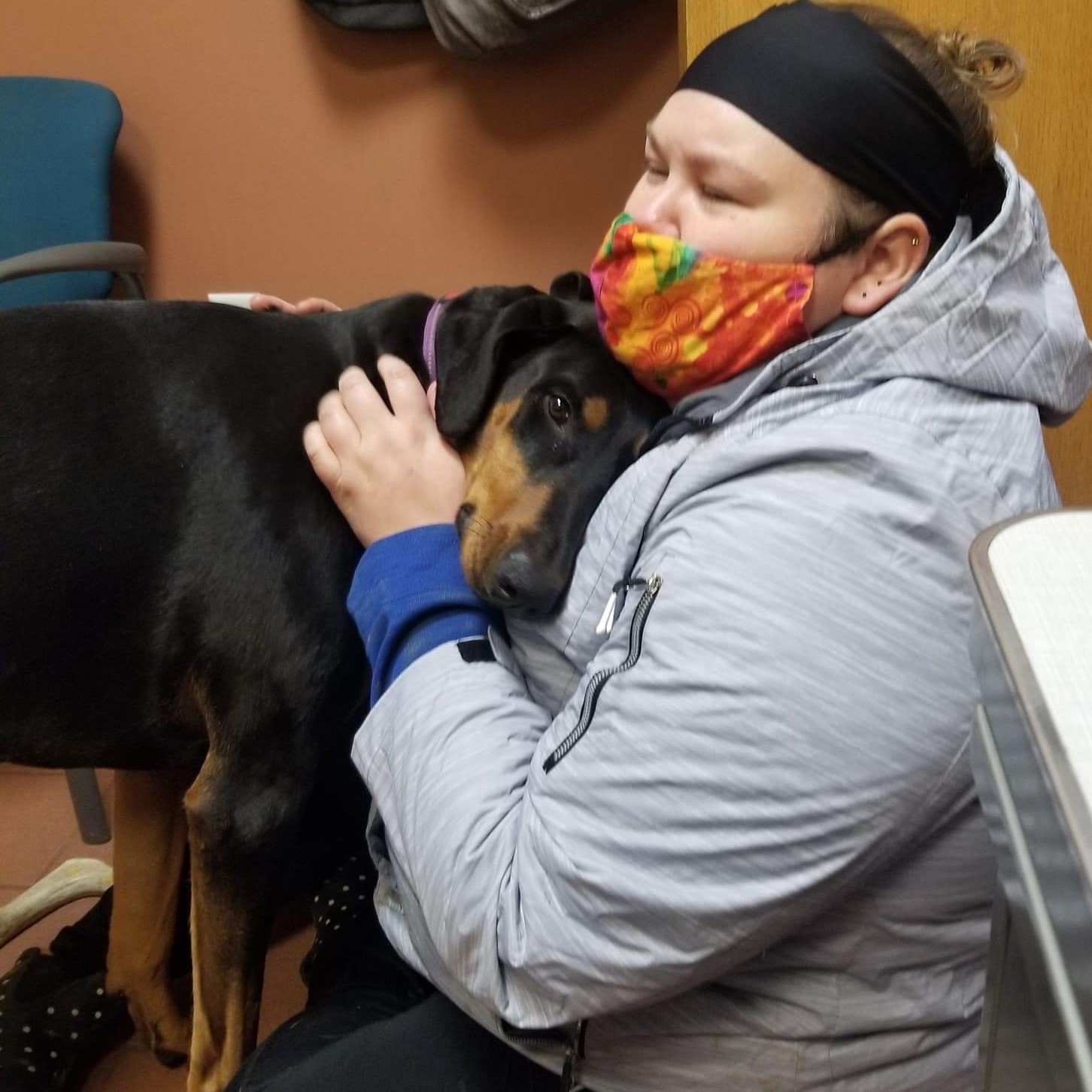
Learning from the staff and volunteers at DCHS gave me the opportunity to help disadvantaged dogs find new families. I could see direct impacts of my time and attention on a dog’s behavior with every volunteer shift. Sometimes it was small, other times large. I got addicted to seeing the light turn on in a dog’s brain when they learned a new skill; or when a scared, nervous dog cautiously approached my hand for a treat; or when a hyper, mouthy puppy settled down for snuggles and a nap in my lap.
Five years have flown by since my first volunteer shift. Sweetie passed away just shy of her 14th birthday in January 2022. Those years were enriched by learning and growing as a dog volunteer, and I knew for certain that my next dog adventure was foster care. I would get to see that light in a dog’s eyes every day.
I just fostered my fourth dog. Instead of limiting myself to making one dog part of my family, I’m helping many dogs on their journey to becoming more adoptable and finding their way to their new families.
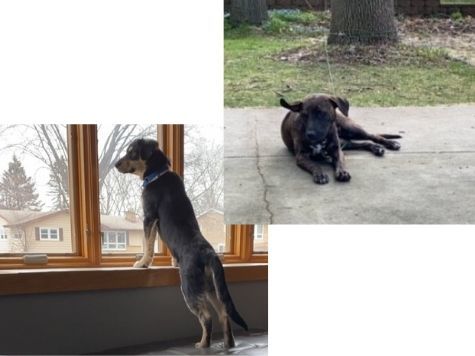
What Fostering is Like for Me
Typically, before I pick up a foster, I work with the Canine Behavior Team and Foster Team at DCHS to discuss dogs who would benefit from time away from the shelter. We discuss what their behavior is like, what special needs they may have, and any medical care required. I ask a lot of questions to determine if the animal would be a good fit for my home environment. As I work from home, I usually need a dog that is able to self-regulate enough to let me work during the day, and not interrupt (too many) meetings.
Once a decision is made, the shelter staff gets me all set up with everything I could possibly need – a small amount of food, toys, medications -- and we start our foster journey.
At home, my goal is to assess and improve the adoptability of each dog in my care. I focus on setting the dog up for success and improving their behavior, potty training, and managing their stress levels.
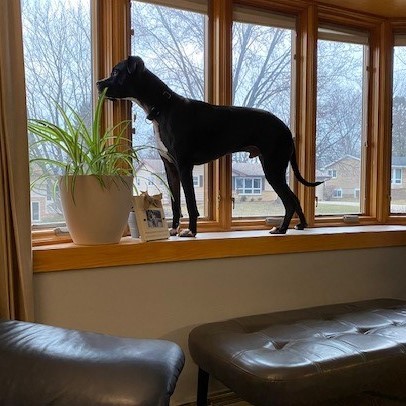
Several foster dogs have been very mouthy -- nibbling at my hands and arms or playing tug with my clothes -- especially when they get excited and/or want to play. Improving their behavior in this situation may mean throwing treats on the floor to reward the good behavior of not having their mouth on me, or not giving them my attention until they stop. I’ve worked with two dogs, Arthur and Joanna, that were very mouthy. To teach them that I didn't approve of this behavior, every time they touched me with their mouth, I would stop what I was doing and move behind a gate so they could not continue to “play” with me or my clothing.
Managing stress levels is a little more difficult to quantify, but sometimes that includes providing anxiety medications and a quiet, safe space (such as a crate) away from people. Other times, it can be providing enrichment, like giant bullion-flavored ice cubes with treats encased in them. I bought a silicone soup freezer tray just so I could make them for my foster pups.
The shelter staff is always available to talk about what I’m seeing and offer guidance along the way. And they have to read my ridiculously-long Pupdate emails.
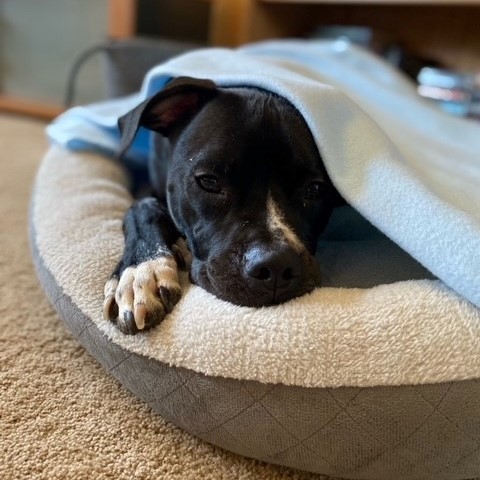
I absolutely love when their personality starts to shine through. My more recent foster, Apollo, was with me the longest – a little over a month. The first night, I let him choose where to sleep, and he jumped up on my bed to circle and paw at my covers. He didn’t settle down very well, and we got up several times that night. The second night, when I lifted the covers to climb in bed, he dove RIGHT UNDER THE COVERS! He promptly refused to move a muscle from dead center of the bed. That was what he wanted the night before! He loves under-the-cover snuggles at bedtime.
Each foster has a unique personality and unique needs. I love everything about this volunteer job so far, even the hard work. Sometimes this means that I have the glamorous task of cleaning up over and over again after a pup who isn’t potty trained. I thought Apollo had broken my hand once as he lunged to the end of a long line trying to greet a new friend on the street. The bruises and the messes are outweighed by the bubbly, happy feeling in my stomach when I get a call from Adoptions staff saying they want to schedule a meeting between my foster and a potential adopter.
I may be a little sad to see them go, and the first night after they’re gone my house is almost unbearably quiet. But my goal is to learn and grow, and in doing so, I get to give dogs in my care the time they need to find the loving family every dog deserves. And, I’m ready to give another shelter dog another foster adventure!
Read About Fostering Big Dogs
We Need More Foster Families
DCHS is always looking for new foster families. We particularly need fosters for big dogs, some of which need help working on their manners. Other reasons dogs, cats, and critters may need a foster home include: they need socialization, they need to de-stress from shelter life, they're recovering from an illness or injury, they're pregnant or new moms needing a quiet place to wean their litter, or they're too young for adoption.

